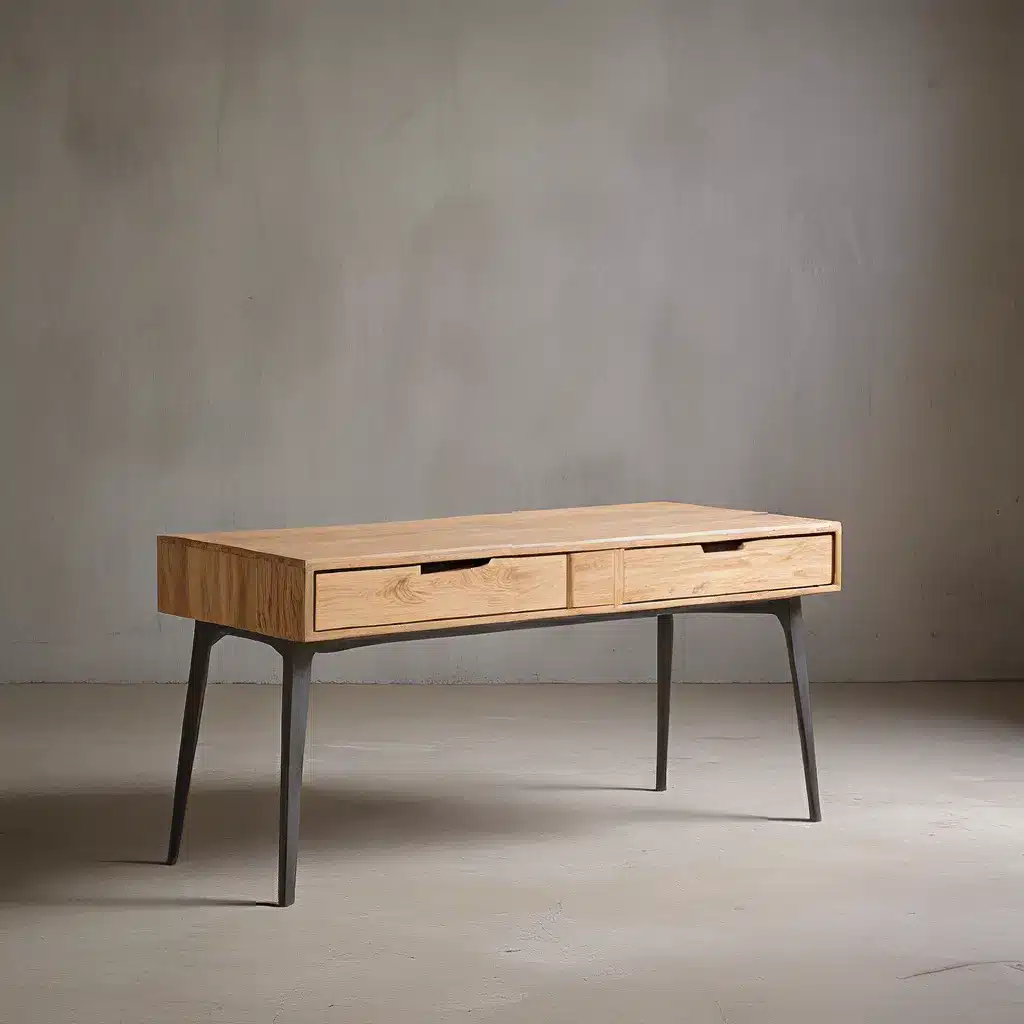
Lifting the Veil on Furniture’s Environmental Footprint
Have you ever wondered about the true impact of that gorgeous handcrafted desk or plush sofa you’ve been eyeing? Well, buckle up, because we’re about to go on a deep dive into the environmental implications of our furniture choices.
As a self-proclaimed furniture fanatic, I’ll be the first to admit that I don’t always think about the bigger picture when I’m swooning over the latest design trends. But with growing concerns around sustainability, it’s high time we start considering the environmental cost of our furnishing habits.
So, let’s peel back the layers and explore the often-overlooked impact of furniture on our planet. Trust me, this is going to be an eye-opener.
The Good, the Bad, and the Ugly of Furniture Manufacturing
When it comes to furniture, the manufacturing process can be a bit of a mixed bag from an environmental perspective. On the one hand, some furniture makers are leading the charge in sustainable practices, using eco-friendly materials and production methods. But on the other hand, the industry as a whole still has a long way to go in reducing its carbon footprint.
MillerKnoll, for example, has made a concerted effort to integrate sustainability into its business model. Their “Design with Impact” approach prioritizes environmentally-conscious design and manufacturing, with a focus on renewable resources, recyclability, and responsible waste management.
But the reality is that many furniture companies are still relying on traditional, resource-intensive production methods. The extraction and processing of raw materials like wood, metals, and plastics can be incredibly energy-intensive and generate significant greenhouse gas emissions. And let’s not forget about the transportation involved in getting those materials to the factory, and then shipping the finished products to retailers and customers.
Furniture’s Dirty Little Secret: The Emissions Problem
One of the most concerning aspects of the furniture industry’s environmental impact is its contribution to greenhouse gas emissions. According to a recent study, the production and transport of furniture accounts for a whopping 3% of global carbon emissions. That’s right, 3% – a figure that may seem small, but when you consider the sheer scale of the industry, it’s a sobering statistic.
What’s even more alarming is that these emissions aren’t just coming from the manufacturing process. The lifecycle of furniture, from raw material extraction to end-of-life disposal, is a major source of carbon pollution. And as our insatiable appetite for new furniture continues to grow, the problem is only getting worse.
Deforestation: Furniture’s Silent Partner in Crime
But the environmental impact of furniture doesn’t stop at emissions. Another major concern is the issue of deforestation, which is closely tied to the furniture industry’s appetite for wood.
Unfinished furniture makers, in particular, rely heavily on timber harvested from the world’s forests. And while some companies are making efforts to source their wood from sustainably managed forests, the reality is that illegal logging and unsustainable practices are still rampant in many parts of the world.
This deforestation not only destroys crucial habitats and biodiversity, but it also contributes to climate change by reducing the planet’s natural carbon sinks. And let’s not forget the impact on local communities who depend on these forests for their livelihoods.
Furniture’s Dirty Little Secret: Toxicity and Waste
But the environmental impact of furniture doesn’t stop there. Many furniture materials, from fabrics to finishes, are laden with toxic chemicals that can have serious consequences for both human and environmental health.
For example, the use of formaldehyde in some furniture products has been linked to a host of health issues, from respiratory problems to cancer. And the disposal of old furniture can also be a major source of waste, with many items ending up in landfills or incinerators.
Rewriting the Furniture Industry’s Environmental Narrative
So, what can we do to turn the tide and make furniture a force for good? Well, the good news is that there are a growing number of furniture makers and consumers who are committed to driving positive change.
Sustainable Materials and Production Methods
One of the most promising trends in the furniture industry is the shift towards more sustainable materials and production methods. Companies like MillerKnoll are leading the charge, using renewable resources like bamboo and recycled plastics, and implementing eco-friendly manufacturing processes that minimize waste and carbon emissions.
Closed-Loop Recycling and Reuse
Another exciting development is the growing focus on closed-loop recycling and reuse in the furniture industry. Some companies are now offering “take-back” programs that allow customers to return their old furniture for refurbishment or recycling, helping to divert waste from landfills and create a more circular economy.
Transparency and Accountability
But perhaps the most important shift in the furniture industry is the growing demand for transparency and accountability when it comes to environmental impact. Consumers are increasingly scrutinizing the sourcing, manufacturing, and disposal practices of furniture brands, and they’re making their voices heard.
A Future Bright with Sustainable Furniture
As we’ve seen, the environmental impact of the furniture industry is a complex and multifaceted issue. But the good news is that there’s a growing movement of companies, consumers, and activists who are committed to making furniture a force for good.
Through the adoption of sustainable materials and production methods, the implementation of closed-loop recycling and reuse, and a renewed focus on transparency and accountability, the furniture industry has the power to transform itself into a true champion of environmental stewardship.
So, the next time you’re shopping for that perfect piece of furniture, I encourage you to dig a little deeper and consider the impact of your purchase. Because when it comes to creating a sustainable future, every choice we make, even the ones as seemingly trivial as the furniture in our homes, can make a world of difference.








